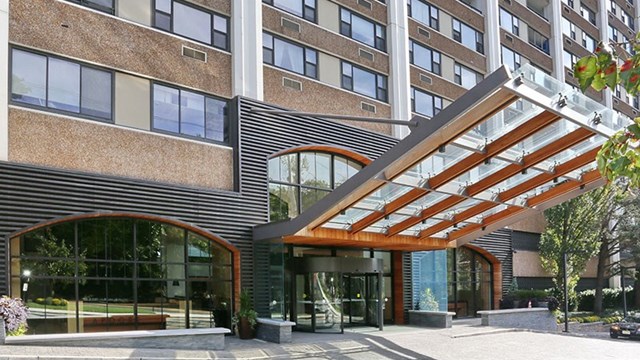
We live in a world of add-ons. Ever since the term supersize was coined by the fast food industry back in 1994, the idea and its implications have spread to many aspects of the American lifestyle. We've become accustomed to 'value-added elements,' buy-one-get-one offers, and other perks when we make purchases. Because bigger is better, right?
Well, maybe...or maybe not. Whether we are talking hamburgers, sneakers, or property management, is it really the size or sheer quantity you're after, or is it the value and the quality of the goods or service that matters? When it comes to property management, what types of services does your building or HOA really require? How much is enough—and how much is overkill (or over budget)?
Don’t Assume - Do Your Homework
When a board is shopping for a new management company, there's often a tendency to seek out a larger firm with the expectation that bigger will mean better. But before making that assumption, the board should first identify and define the services which its individual property actually requires, and be sure it is clear as to what is wanted and needed. Once the board has drafted a list of goals and objectives for a prospective management company, it will be much easier to judge whether a particular firm can deliver the desired outcomes.
As Dan Wurtzel, of FirstService Residential, with offices in Lyndhurst, Eatontown, and Plainfield, puts it, “The more boxes you can check off, the better the fit.”
Wurtzel oversees departments that collectively manage nearly 500 condominiums and cooperatives, as well as 78,000 rentals. Despite the size and scope of FirstService, says Wurtzel, “The key to successful management is not size, but providing exceptional service.”
The ability of a management firm or manager to provide that service depends not only on your board's expectations, but also the size of the building or HOA portfolio each manager at a given firm handles, and the location, type, and size of those buildings. You may want to look for a management company with a low building-to-manager ratio; that could indicate that your manager will be more accessible and responsive to your needs than one who's juggling more properties might be.
Steven Greenbaum, director of property management at New York-based Mark Greenberg Real Estate (MGRE) is a proponent of this low building-to-manager ratio. With between 35 and 40 properties, he considers his company a boutique or mid-sized management firm. “A manager should have no more than six properties to oversee, with those properties located in a cohesive geographical area,” says Greenbaum.
He believes a small company with fewer properties may be able to spend more time on site, and he favors at least one regularly scheduled weekly visit, and one weekly unscheduled visit per property. Greenbaum says a company’s back office administrative support allows each manager to effectively spend the necessary time required visiting the individual properties. “This team approach also allows for positive peer support and staff interaction,” he explains.
Margie Russell, executive director of the New York Association of Realty Managers (NYARM) in New York City, has an impressive real estate history as both a portfolio and onsite property manager for some of New York’s largest co-ops, condominiums, and mixed-use buildings. Like Wurtzel and Greenbaum, she doesn’t think a large firm is necessarily a better firm. “It is all about the individual in charge and their dedication to the job and perfect service,” she says.
Extra Perks
If superior service can be delivered by any size property management firm with the dedication and leadership to embrace excellence, then what—if any—differences are there between a large and small/boutique firm?
Large and small firms can differ in a number of significant areas, some of them obvious and others more subtle. Perhaps the biggest difference rests with the question of personnel. The simple fact of the matter is that larger companies have more staff.
Greenbaum notes larger firms may have bigger accounting departments to handle budgeting, and financing. “A larger firm may also have the ability to secure additional financing when required, or negotiate discounts from vendors,” he says.
Wurtzel agrees, “As a national management company, FirstService Residential uses a mix of in-house resources, advanced technology, and strategic affiliations to offer our clients exclusive benefits,” he says. Those resources include an attorney and compliance counsel, as well as banking, financial and insurance programs, online sale and lease applications, discounted tax services, and proprietary building management software. “Our clients also have access to a team of customer care professionals 24 hours a day, seven days a week,” he explains.
Different sized firms also attract managers and property managers with varying mindsets. Although New Jersey managers are not required to be licensed, much of the profession continues to gather professional development through various certification avenues. Continuing education is often provided by firms of all sizes, as well as through professional organizations, such as the Institute of Real Estate Management, which has two New Jersey chapters (IREM New Jersey Chapter No. 1 and IREM Southern New Jersey Chapter 101.)
FirstService Residential has an in-house School of Professional Development for managing agents and association managers supplemented by practical training, certification and licensing programs. The Community Associations Institute (CAI), also has two New Jersey chapters, (CAI-NJ) in Freehold, and the Pennsylvania-Delaware Valley chapter (CAI-PADELVAL) in King of Prussia, PA.
CAI offers several different levels of certification that range from managing community associations to accrediting companies that specialize in community association management. Some of the available accreditation titles include Certified Manager of Community Associations (CMCA), Professional Community Association Manager (PCAM), Association Management Specialist (AMS), and Large Scale Manager (LSM). IREM designations include Certified Property Manager (CPM) and management companies themselves can be certified as an Accredited Management Organization (AMO), a designation established by IREM and the National Association of Realtors (NAR).
Finding the Perfect Fit
Once a board has defined the needs and wants for its property, it is time to narrow the field and find a good personal fit—or perhaps work on adjusting the fit with the current management firm. A small firm can still offer additional support on an as-needed basis, especially when there is mutual respect and a desire for everyone to act in the best interests of the community.
Make sure you consider all your options and don’t just switch managers for the sake of switching. As the saying goes, “If it ain’t broke, don’t fix it,” and that might apply to this situation too. Obviously, you want the best deal and best service possible for your building community but if you are already happy with what you have and are just making a move because of promises another company made, you could find out that they are not everything you thought.
Industry experts agree that a board should exhaust all options with existing management before making a change.
Unit owners don’t make the decision to change, but if a majority of residents feel a change is necessary and have good reason for the request, the board should listen and either work to correct the situation or vote to make a change. “One reason we see associations wanting to change agents is that the manager lacks the ability to respond to the owners or board on pressing issues of the association,” says Brian Weaver, CMCA, AMS and director of business development for Wilkin Management Group in Mahwah. Another reason to consider a change, he says, is that the manager does not have the necessary support staff, like accounting and administration, to fully service the property.
When a board is looking to change management companies and searching for a better fit, Russell has a few questions she suggests the officers consider before making any changes. If a property is experiencing a reoccurring change in managers she recommends the board evaluate itself, and ask the hard questions “Are you part of the problem? Are you a good partner?”
“A board should perform due diligence, taking into account the human perspective and personalities,” she explains.
Wurtzel suggests a board look to a company’s culture rather than size. “Being able to deliver quality service, attention and solutions is evident in a company’s culture, not its size,” he explains. Boards seeking the right management partner to help meet their objectives should consider a company’s scope of capabilities, years of experience, client retention record, reporting and evaluation practices, and the quality and reputation of its managers.
And don’t just lowball your selection. Remember, too, that the lowest price is not always the best bargain. “Many boards tend to go for the low bid, not for what they need,” according to Michael Packard, PCAM, CPM, a senior vice president of Associa, a nationwide management firm. “Low bids can result in a company having too many clients in its portfolio.” And that could mean the new condo community can end up at the bottom of the priority list.
The experts all agree that doing what is right is not a function of size, but rather an attitude of professionalism, achievable in any firm determined to deliver quality service. Look for the right size firm to partner with to achieve the goals and objectives of your property. When all is said and done, the real value added bonus comes with having the best fit in management size and style to match your needs!
Anne Childers is a freelance writer and a frequent contributor to The New Jersey Cooperator.






Leave a Comment